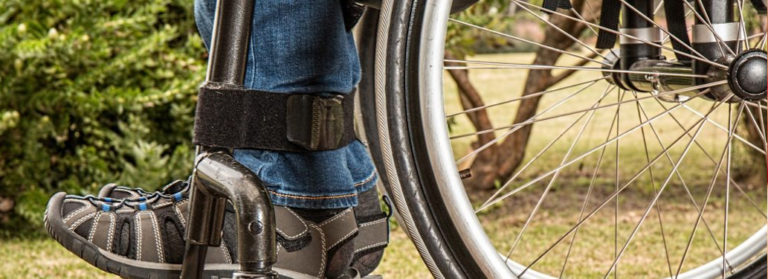Lose Weight When You’re Disabled

Lose Weight When You’re Disabled
Disabilities range in severity, depending on the cause and how much it impairs day-to-day life; however, all disabilities have the potential to make some parts of life very difficult. Weight management is often negatively affected by disability, especially if it makes exercise or other physical activity difficult. For those who have severe physical restrictions due to disability, it is still possible to lose weight, although it might require significant dietary changes to reduce fat and caloric intake.
Step 1
Track what you eat and how much you eat at one time in a food diary. Record nutritional information, if possible, as well as serving size and calorie content from the packaging of your food as well to get a better idea of how many calories you’re taking in each day.
Step 2
Consult your doctor or a nutritionist, and inform him of your desire to lose weight. Depending on the cause of your disability, sudden dietary changes or other major lifestyle changes could cause complications with your condition. Bring your food diary with you each time you meet with your doctor or nutritionist to discuss your current caloric intake and get advice on what dietary changes you can make based on what you’re actually eating.
Step 3
Set an overall weight-loss goal as well as several smaller goals that will be easier to reach. By setting reasonable intermittent goals, you can more easily track your progress and are less likely to suffer from depression or give up on losing weight because you have difficulty reaching a larger goal. Once you meet your initial goal, set additional goals to lose more weight.
Step 4
Limit the foods that you eat to lower-calorie options to reduce your overall caloric intake. It takes a reduction of 3,500 calories to burn 1 pound of fat, so you’ll need to cut 500 calories from your diet per day if your goal is to lose 1 pound per week.
Step 5
Exercise or otherwise increase your physical activity level, if possible. Talk with your doctor, physical therapist or a personal trainer to see what options are available for you to work around your disability and be active. Any increase in physical activity can be beneficial, especially if you are able to perform activities that keep your heart rate elevated for 10 minutes or longer.
Step 6
Lift weights and perform other resistance-based strength training exercises if possible. Strength-training not only prevents your muscles from degrading as a result of inactivity, but also increases the amount of lean muscle mass in your body. Larger amounts of lean muscle increase your metabolic rate, burning more calories throughout the day and helping you to lose weight.
Step 7
Join a weight-loss support group, especially if you can find one that focuses on people with disabilities. If you are unable to join a support group, talk to friends and family so they can serve as your support network.
Step 8
Set regular appointments with your doctor or nutritionist to review your progress, evaluate your diet and activity level, and determine what changes may need to be made to keep you on track toward your weight loss goals. Reviewing your progress every one to three months not only lets you see how effective your efforts have been, but also ensures that you won’t spend an inordinate amount of time doing the wrong things to try to lose weight.